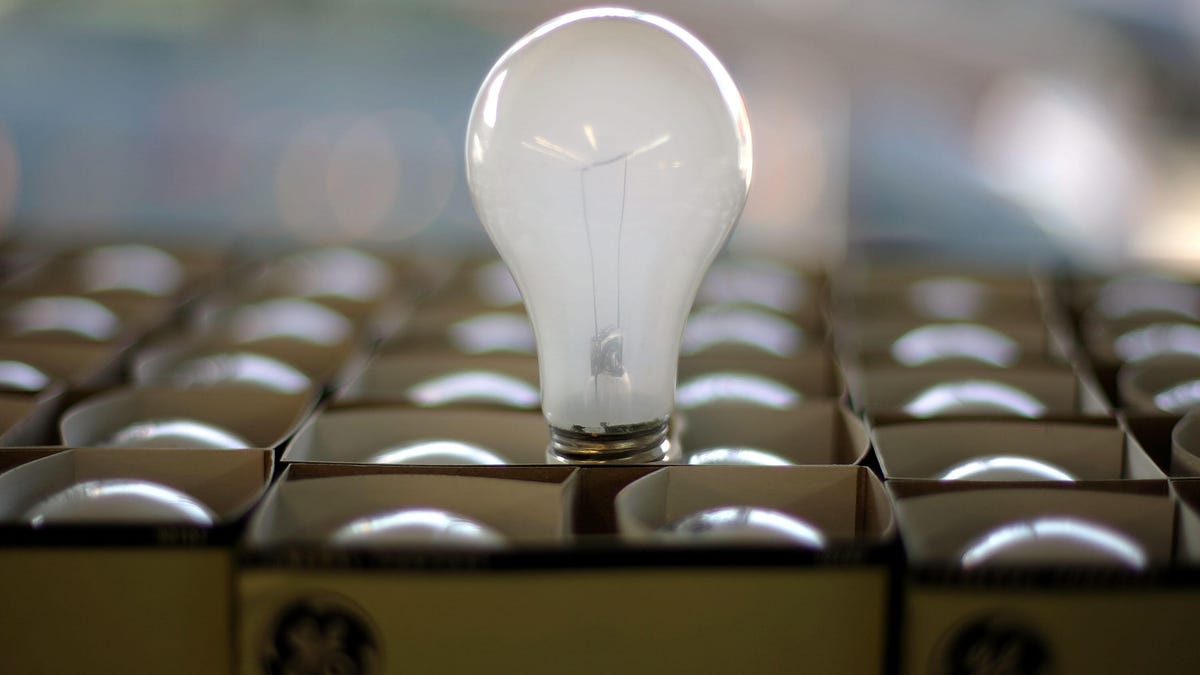Incandescent Lightbulb Ban: Here's What You Need to Know
New regulations from the Department of Energy this month have ended the sale of most incandescent lightbulbs in the US.

Sixteen years after the Energy Independence and Security Act required lightbulbs to be more energy efficient, the sale of most household incandescent bulbs is now banned in the US.
If you go to the hardware store this week, you might notice something different. Federal regulations increasing the minimum efficiency levels for lightbulbs went into effect on Tuesday, effectively banning the sale of most incandescent bulbs across the US.
The Department of Energy now requires lightbulbs to emit at least 45 lumens per watt, about three times what an incandescent puts out.
"The lighting industry is already embracing more energy-efficient products, and this measure will accelerate progress to deliver the best products to American consumers and build a better and brighter future," Secretary of Energy Jennifer Granholm said when the new standard was introduced last year.
The agency allowed retailers to continue selling incandescents through the end of July, though many stopped months ago.
Here's what you need to know about the ban, including what bulbs are included and what's coming next.
For more, check out what to know when buying LED bulbs and how to save money on lighting.
What kind of lightbulbs are banned?
The DOE regulations impact "general service lamps," the kind of bulbs commonly used in floor and table lamps and overhead lighting.
Some incandescent bulbs are exempt, according to the Environmental Protection Agency, "including specialty bulbs, three-way bulbs, chandelier bulbs, refrigerator bulbs, plant grow lights and others."
Why is the government banning incandescent bulbs?
The Energy Independence and Security Act signed by President George W. Bush in 2007 required household lightbulbs to be about 25% more efficient by 2020.
Switching from incandescents to light-emitting diode (LED) bulbs will save consumers almost $3 billion a year on their utility bills, according to the DOE.
It's also expected to slash carbon emissions by 222 million metric tons over the next 30 years, equal to the amount generated by 28 million homes in one year.
In 2019, though, the Trump administration blocked enforcement of that mandate, which it called "unnecessary overregulation."
"Innovation and technology are already driving progress, increasing the efficiency and affordability of light bulbs, without federal government intervention," then-Energy Secretary Dan Brouillette said in a statement at the time.
In 2022, President Joe Biden revived the original guidance on lightbulb efficiency, giving manufacturers and retailers until July 31, 2023, to phase out any bulbs that emitted less than 45 lumens per watt.
Do I have to throw away my old lightbulbs?
You're free to use whatever bulbs you can find -- the prohibition is on the manufacture and sale of bulbs that don't meet the new efficiency standards, not their use.
Diehard incandescent buffs are turning to Amazon and eBay to stock up. But most Americans probably won't bother: According to data from the National Electrical Manufacturers Association, less than 20% of lightbulb sales in the first quarter of 2022 were incandescent.
Can I use compact fluorescent lightbulbs?
For now. In December 2022, the Department of Energy proposed further regulations that would bump up the minimum lightbulb efficiency from 45 to more than 120 lumens per watt by the end of 2024.
That would effectively ban compact fluorescent lightbulbs, which generate just 50 to 70 lumens per watt.
Vermont already banned the sale of CFLs in February, and California's prohibition takes effect next year. Lawmakers in Illinois, Maryland, Massachusetts and other states are considering either outright bans or increased restrictions on CFLs.
What are LED bulbs?
LED bulbs work by passing a current through a microchip, which illuminates a tiny light source, or diode, to produce visible light. They're more expensive but can last 30 times longer than a standard incandescent bulb and three to five times longer than a CFL.
Some LEDs can't be dimmed and others are not compatible with all lighting fixtures. Critics also complain LEDs have a tendency to flicker, but manufacturers insist that's the result of poor-quality products.

